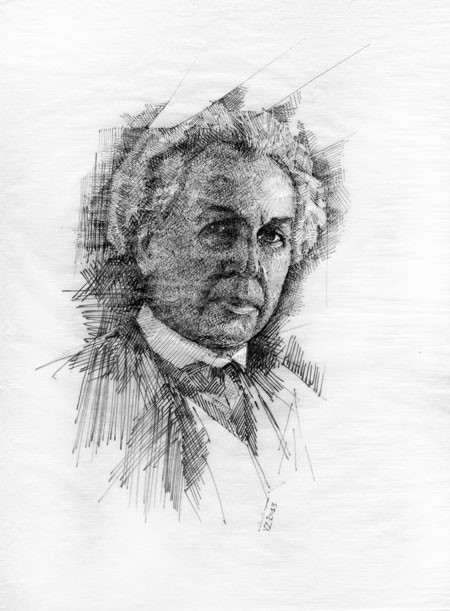National Building Museum Celebrates Wright’s 150th Birthday with Life-sized Coloring Book Gallery and Day of Learning

WASHINGTON, D.C.—This June, the National Building Museum celebrates the 150th birthday of Frank Lloyd Wright on June 10 by opening a hands-on coloring space titled Wright on the Walls and hosting a day of Wright-inspired talks and activities. The events take place on June 10, 2017; Wright was born on June 8, 1867.
Museum visitors are invited to Wright on the Walls in an exhibition gallery transformed into an interactive, large-scale “coloring book” inspired by the architect’s work. In conjunction with the opening of the Wright on the Walls, the Museum has organized Frank Lloyd Wright Day, during which visitors of all ages are invited to participate in hands-on activities that explore Wright’s enduring legacy. Wright on the Walls opens June 10, 2017, and runs through the summer. The Museum’s Frank Lloyd Wright Day also takes place on Saturday, June 10 from 10 am to 3 pm.
“The activities and talks planned will beautifully showcase why Frank Lloyd Wright’s architecture and ideas are still relevant,” said Chrysanthe Broikos, a curator at the National Building Museum. “I can’t think of a more appropriate place to learn about Wright’s holistic approach to the built environment and how architecture can be a leading and guiding force for how we understand and experience the world.”
Wright on the Walls
Wright on the Walls features original interpretations of built and unbuilt Wright designs created by local artists Scott Clowney and Vladimir Zabavskiy. Focusing on five areas of Wright’s work—residential, commercial, houses of worship, automobile culture, and decorative details—the interactive space challenges visitors to add their own creative “color” to large-scale drawings printed on the walls, using shades and hues inspired by those used by Wright and his studio. The drawings include lesser known and unbuilt projects, such as a gas station in Cloquet, Minnesota and Wright’s surprising design for the peak of Sugarloaf Mountain in Dickerson, Maryland, as well as local sites like the Pope-Leighey House in Alexandria, Virginia. Wright on the Walls will not only celebrate Wright’s legacy and lasting influence, but raise awareness about the role of color and nature in his work. Rounding out the sensory experience will be ambient music adapted from music played in Wright’s Taliesin studios.
Washable dry-erase markers will be provided to visitors in Wright on the Walls; visitors are asked not to bring their own coloring supplies. Visitors can share their creations with the hashtag #WrightOnTheWalls; the National Building Museum will repost and share the best creations online.
Wright on the Walls opens June 10, 2017 and runs through September 4, 2017. Admission to this gallery is included in the Museum’s general admission fee.
Frank Lloyd Wright Day
On Frank Lloyd Wright Day, visitors can create a stained glass ornament in Wright’s signature style, build a paper model of the Research Tower at the Johnson Wax Headquarters, “visit” iconic Wright buildings via Google Cardboard, and test how much load cantilevers can bear. The Museum also hosts drop-in “lighting talks.” Curator Sarah Leavitt shares highlights from Taliesin Diary: A Year with Frank Lloyd Wright; curator Chrysanthe Broikos discusses Wright’s only skyscraper design; urban historian William Keene details Wright’s use of technology; and architect and author Steven M. Reiss chats about Wright’s innovative Usonian houses. In addition, the Museum Shop has special discounts on Wright-themed products.
Frank Lloyd Wright Day takes place June 10, 2017 from 10 am to 3 pm. This is a free, drop in program open to all ages.
This day of programs is made possible by Dr. Lawrence Spinelli.
ABOUT FRANK LLOYD WRIGHT
Frank Lloyd Wright (1867–1959) is considered the most influential American architect of the 20th century. Wright made paramount contributions to architecture not only in terms of innovative structural systems, architectural space, and ornamentation, but also in emphasizing the relationship of architecture to its natural site as well as to art and life. Wright’s architecture built new and modern lifestyles. His concept of organic architecture insisted that buildings grow naturally from their environment, be harmonious with their materials, and respond to the needs of their inhabitants. By using these principles, the form and function of a building could be integrated into a unified whole.
ABOUT THE ARTISTS
Scott Clowney (b. 1979) is an architecture enthusiast, exhibitions specialist, and visual artist originally from Gettysburg, Pennsylvania. Inspired by structures that give shape to the city, his pen-and-ink line drawings celebrate all aspects of the building arts. Clowney earned a Master of Arts in Exhibition Design from the Corcoran College of Art + Design and a Bachelor of Architecture from the University of Kentucky’s College of Design. He lives and works in Washington, D.C.
Vladamir Zabavskiy (b. 1968) is an award-winning artist and graphic designer. A native of Moscow, Russia, he is a graduate of Moscow State Pedagogical University. Before joining the National Building Museum, he served as an art director and graphic designer in Young & Rubicam’s Moscow office. Fascinated by the nexus of graphic design, art, and architecture, Zabavskiy uses painting, drawing, and etchings to explore where realistic objects move into abstract forms. His work has been shown locally at a number of venues, including the Torpedo Factory Art Center, Touchstone Gallery, Edison Place Gallery, Del Ray Artisans Gallery, and the Columbia Pike Artist Studios, where he has studio space.
ABOUT THE NATIONAL BUILDING MUSEUM
The National Building Museum is America’s leading cultural institution dedicated to advancing the quality of the built environment by educating people about its impact on their lives. Through its exhibitions, educational programs, online content, and publications, the Museum has become a vital forum for the exchange of ideas and information about the world we build for ourselves. Public inquiries: 202.272.2448 or visit www.nbm.org. Follow us on Twitter: @BuildingMuseum and Facebook: www.facebook.com/NationalBuildingMuseum.
